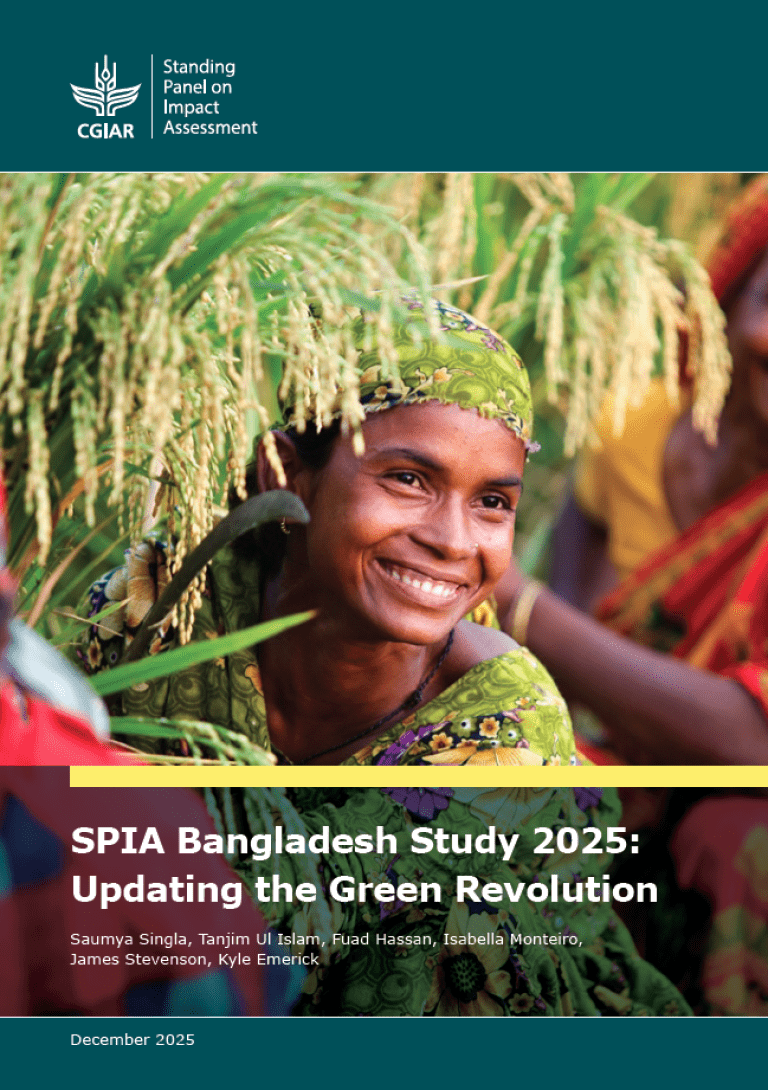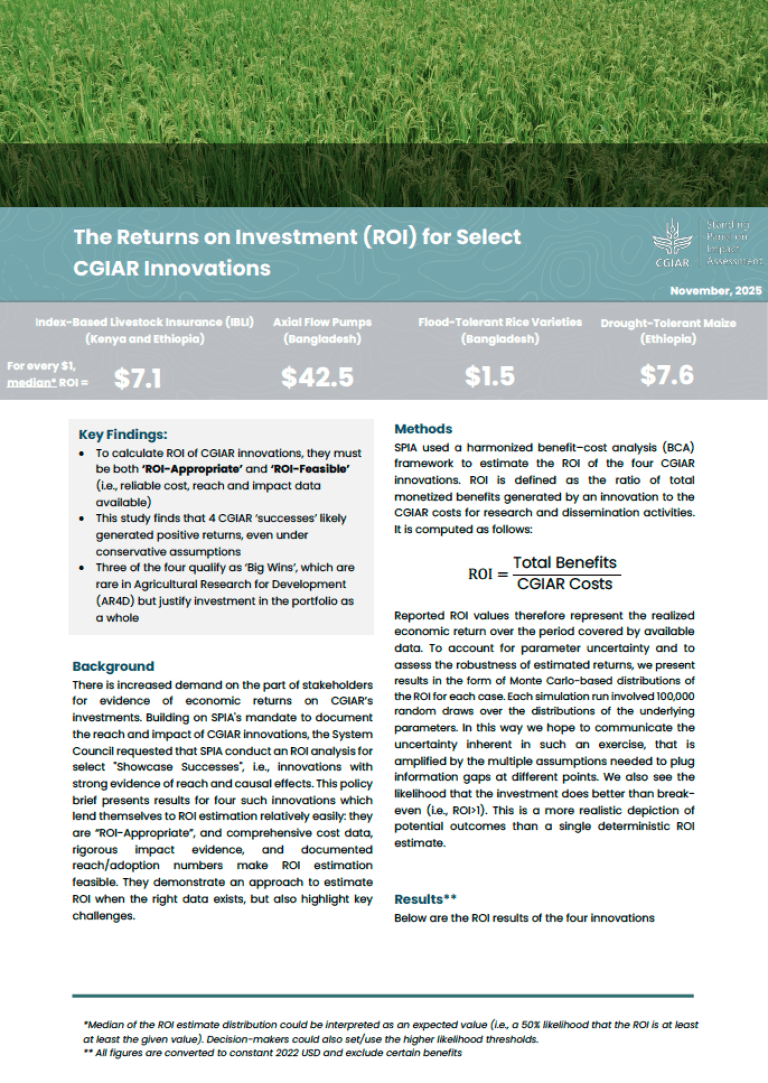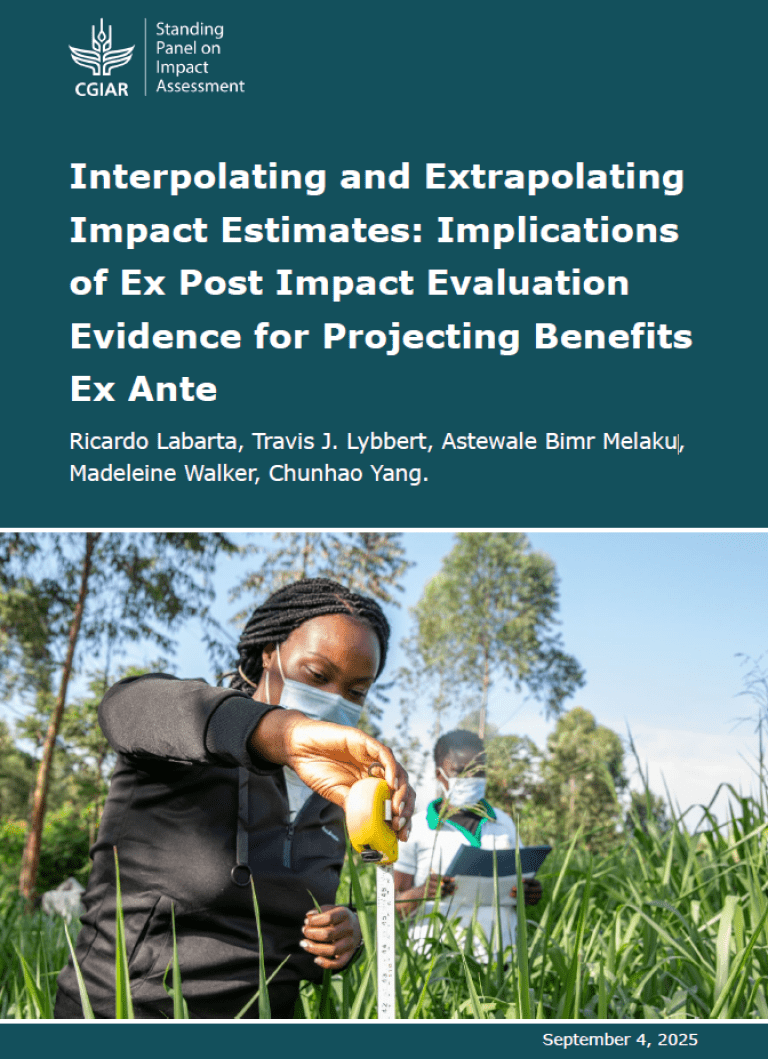Unlike seeds which physically embody the technological change within them, most natural resource management (NRM) research outputs are disembodied and thus adoption is not often discreet posing several challenges to ascertain levels of adoption. Nevertheless, some practices can be observed remotely or through simple but carefully-timed surveys, and others will remain harder to observe or require detailed farmer surveys.
Similar to the MSU-led effort to collect crop varietal release and adoption data in S/SE and East Asia, SPIA is leading an effort to validate and document the adoption of CGIAR-related NRM practices. In early 2014, a consultant (Nuri Niyazi) reviewed NRM outcome claims (for the period 2003-2012) made in Annual Reports of Centres and Performance Measurement System (PMS), and developed a database on adoption of specific NRM-related innovations, by country, derived from or informed by CGIAR research. This long-list was further refined in 2014/15 resulting in a shortlist of seven NRM practices (alternate wetting and drying, conservation agriculture, cocoa integrated crop and pest management, fertilizer trees, integrated soil fertility management, micro-dosing, and site-specific nutrient management). These seven practices will be the focus of a series of studies on the current levels of adoption using a multiplicity of approaches (for e.g., farmer surveys, expert interviews, remote sensing).
SPIA issued a competitive call for expressions of interest (EOI) in November 2015. In the second week of December 2015, the strongest EOI proponents were invited to participate in a workshop in Rome to develop workplans and broker collaborations for funding sets of viable case studies for documentation and verification of adoption of CGIAR-related NRM technologies (to be implemented in 2016-17). Further, preliminary results of recent work co-funded by SPIA and LSMS was presented, which comprises field-testing of new protocols (notably drones and remote sensing) to estimate adoption levels of certain NRM practices (e.g. soil cover as relevant to conservation agriculture) in Sub-Saharan Africa. More information on the workshop can be found in the Events and Blog page.
As a second-stage in this process, at the end of December 2015, SPIA invited full proposals from workshop participant teams for collaborative work packages to document the adoption of seven NRM practices in selected countries (studies to commence in the first quarter of 2016). Following external review and approval by SIAC PSC in March 2016, the following adoption data collection efforts have been approved for funding. A brief description for each funded effort will follow in late April/early May 2016.
| NRM Practice/Technology and Country Combination | Research Team |
| Conservation agriculture: Mozambique and Zambia | CIMMYT/ICRISAT |
| CA: Malawi | Norwegian University of Life Sciences (NMBU)/ Oregon State University (OSU) |
| Agroforestry and CA: Malawi and Zambia | FAO EPIC |
| Microdosing and CA: Zimbabwe and Niger | ICRISAT/CIMMYT |
| CA: India | IFMR/CIMMYT/Univ. of Michigan |
| CA: North and Central Mexico | CIMMYT |
| Agroforestry: Zambia | ICRAF/FAO EPIC/Penn State/Univ. of Zambia |
| Integrated Soil Fertility Management (ISFM): Kenya, Rwanda and Zambia | IFPRI/GeoPoll/IITA |



